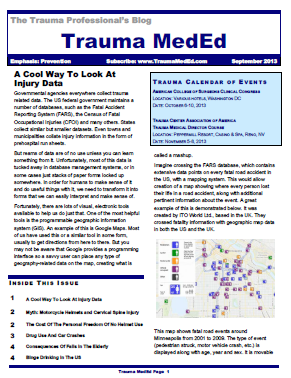Yesterday, I wrote about using smartphones in place of good, old-fashioned dumb pagers. Reader wang-kevin reblogged it and referenced another new article citing the pitfalls of the phones.
The article was a recital of 10 problems with smartphones in clinical care. These were derived from articles citing known shortcomings of these devices. Here’s a brief listing of them. In my opinion, only the bolded ones are significant for normal clinical use.
Disrupted clinical communication
- Audio distortion – The audio quality of cell phones has never been a priority for the carriers. There may be an opportunity for misunderstanding spoken orders (e.g. the number “sixteen”) due to the usual poor audio quality.
- Faulty monologue – Texts may be sent that contain significant misspellings or errors. Fortunately, entering orders via text message is not valid.
- Fumbled messages – This refers to email that is not properly titled, or with ambiguous language or missing attachments.
- Missive avalanches – (who thinks these up?) Caused by inadvertent “reply all” or large chains of messages.
Social disengagement
- Mindless checking – Alas, this malady affects nearly everyone with a smartphone. And it’s probably not medical stuff being checked (think Facebook).
- Surrounding neglect – This occurs when mindless checking meets walking. Less likely in a hospital.
Failures of technology
- Unanticipated loss – Again, most trauma professionals are very mindful of their phones, so not very likely.
- Myth of dependability – This one is very important. Sometimes texts are delayed, or calls go straight to voicemail without ringing the phone. Pagers are a bit less finicky.
Direct patient harm
- Nosocomial infections – Yes, really. There have been a host of articles showing that white coats, stethoscopes, ties, magazines, even sanitizing foam dispensers are colonized with bad bacteria. Your phone can be as well, and it’s a bit harder to sterilize.
- Breached confidentiality – Lose an unlocked phone, and there could be confidential information on it. But it’s not very likely, since there are no good electronic medical record systems for phones yet.
Bottom line: There’s really no new information in this article that people don’t already know. And only a minority of the “issues” are pertinent to real clinical care. The rest may be significant if the phone is used for general daily use at work. Given the sheer number of brands and models of smartphones out there, they are here to stay. This has given rise to the bring your own device (BYOD) concept, meaning that it won’t be possible for a hospital to mandate that only one specific smartphone is acceptable. Not unless they want to buy that model for every clinical employee.
Related posts:
Reference: Pitfalls with smartphones in medicine. J General Internal Medicine 28(10):1260-1263, 2013.



